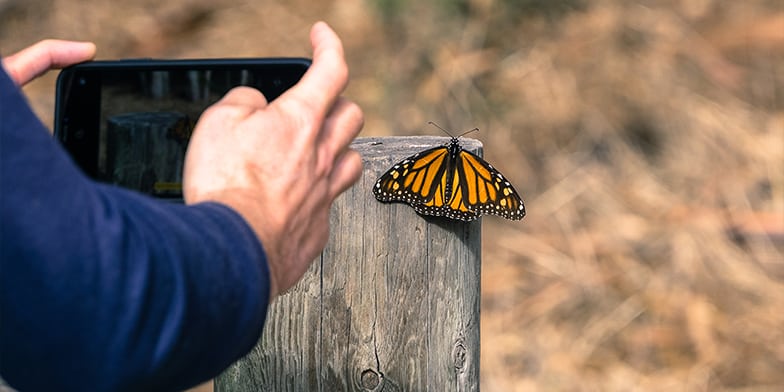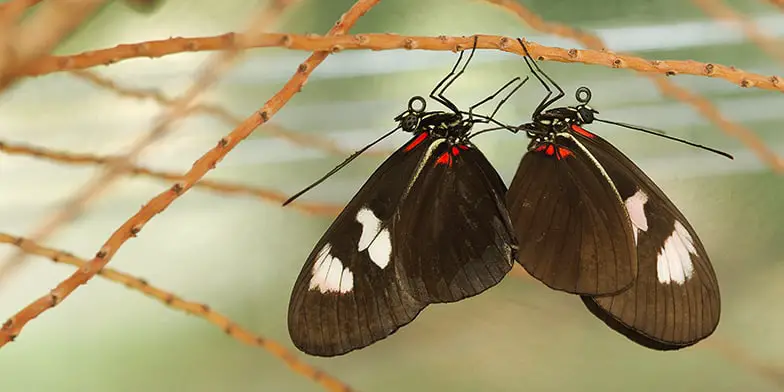
Most people focus on the exterior beauty of butterflies and their judgment tends to stop there, but these fascinating insects offer far more than just their aesthetics. Butterflies can be pretty smart. They also have a unique learning process.
Butterflies are smart enough to survive, learn, and benefit from their surroundings. Although recent research has shown that the intelligence of butterflies and moths may have been underestimated, they are not smart enough to bond with humans keeping them as pets.
With this article I have provided all the information related to the smartness of butterflies and how they have learned all that they have. It should be enough to cater to your newfound curiosity regarding this topic.
How Do Butterflies Learn?
Much of the butterflies’ learning process is dependent on their memory. Butterflies retain the information they learned as babies. This challenges the process of metamorphosis. This is because the transformation from caterpillar to butterfly is supposed to turn their original system into mush.
Experiment
A test on their memories was conducted at Georgia University, on caterpillars of different ages. According to the ecologists there, memory retention is influenced by the maturity of the caterpillar’s brain during development.
The test was conducted in a Y-shaped pipe where the caterpillars had to choose between an area of clean air or that of ethyl acetate. Previously, as infants, the caterpillars had been electrically shocked with ethyl acetate. After a month of metamorphosis, it was discovered that approximately 70% of the adults, transitioned from caterpillars, chose the clean air.
Result
The tests highlighted that the neural tissues concerning learning, memory, taste, and smell do not change during metamorphosis. The mushroom bodies are present inside the brains of the insects. They, along with the antennae, are responsible for the influence on memory, learning, and tasting.
Hence, since these mushroom bodies are essential to the survival of the butterflies, they remain mostly unchanged. To accommodate the new changes through metamorphosis, the rest of the brain has to go through the new developments. Thus, the adult butterflies hold on to the knowledge that there is an association between ethyl acetate and the electric shock they received.
Caterpillars who can connect the association at an early age are said to not remember while those who can make the association at a later stage are said to carry that information into adulthood. This procedure is what helps butterflies learn about the things which are crucial for their survival. Their learning ability can also be enhanced upon training.
If you feel like you still are yet to grasp the concept of their learning and memorizing, you can take a look here.
What Makes Butterflies Smart?
Butterflies are a generally instinctive species due to their past experiences which help them gather food. Butterflies can remember the color and shape of the flowers that previously offered them nectar. But their smartness does not stop there.
Mating
Butterflies develop clever strategies to catch the attention of their potential partners. Displaying bright colors is usually an option that works the best. Butterfly wings have pigments that absorb particular wavelengths of light and reflect the others. Through the movement of the wings and their reflection off the scales, they put on a display of vibrant and glittering colors.
Since colors cannot be useful in the dark, butterflies use smell. They give off a certain scent to enable communication through chemical signaling.

Ant Protectors
Some butterflies actually use ants as babysitters to protect themselves during the caterpillar stage. Through special chemicals, the caterpillars attract the ants and get them to work. In return for nutrients, the ants fiercely protect the babies. The ants may back out though when it comes to their own safety.
Upon reaching adulthood, the butterfly becomes even more sneaky and starts stealing food from the ants themselves. An example of the species is Adeloptypa annulifera.
Avoiding Predators
Most butterflies camouflage themselves with their surroundings. As a result, they nearly become invisible to their predators. They do so by folding up their wings and only showing their undersides on display.
You might feel shocked to know that butterflies can survive and even fly with chunks of their wings missing. It is the head that ensures a butterfly’s survival. So, the butterfly often takes adequate measures so that predators like spiders, lizards, or birds do not bite its head off.
Some butterflies have fake heads placed on their wings. When predators target them, butterflies wiggle this part so that the predator has its focus on the false head only and does not look at any other body part. So, if the predator does attack, the insect somehow ends up surviving due to its trickery.
Some butterflies, such as the swallowtail butterfly release odors to fend off predators. Upon feeling threatened by caterpillars, they release a slimy colorful organ that creates an unpleasant smell. It is called the osmeterium. As a result, predators are repelled by it and stay away.
The tactics do not end there. Some butterflies, in order to taste bad to butterflies, end up absorbing the poison present in their food plants. As a result, the poison gets into their system. They end up tasting bad. This can also be unhealthy for predators such as birds.
The Monarch butterfly feeds on an extremely bitter plant known as the milkweed. The plant is also poisonous to predators because of a specific steroid present in it. As a result, the bitter and poisonous taste gets infiltrated into them. Birds and other predators stop targeting them due to their bad taste. Monarch butterflies also exhibit bright colors to let predators know that they are poisonous.
Some butterflies even take it to the next level with their slyness. They only pretend to feast on milkweed. Hence, they do not even have poisonous food and also keep the predators away. Butterflies can evolve colors in wings that can look exactly like those that the poisonous species can have. The term for this act is mimicry. The predators see these color themes as a warning. They stay away.
Are Butterflies Smart Enough to Bond with Humans?
When a butterfly lands on you, the general thought is that it is attracted to your presence and is seeking comfort. But the truth is, it is simply attracted to the sodium that is present in human sweat. Some species of butterflies can sometimes require more sodium than nectar.

Other than that, humans intimidate butterflies a fair amount. Their fear is not surprising given the vast difference in the sizes of the two species. Hence, it is not surprising that some even perceive humans as predators.
For better understanding of them, butterflies are used for educational research. Monarch butterflies are a popular example. During such research and tests, the monarch butterflies have been known to feel stress in the presence of humans. The reactions include rising heart rates. This is a trigger reaction that is induced by predators. The same reaction is not found in adult butterflies though.
The scientists behind the research handle the butterflies with the utmost care. They think that the gentle probing does not cause stress to adult butterflies. Yet even then, the butterflies do not exactly bond with them. They are merely indifferent.
Conclusion
Butterflies are pretty cool, but we are sometimes too caught up with their beautiful display to see beyond it to how they express their intelligence. I hope this article has broadened your insight!.
Thanks for reading, see you next time!
Driven by a passion for those tiny creatures that rule our world, we at Bug Domain strive to be your go-to resource for information on insects.




